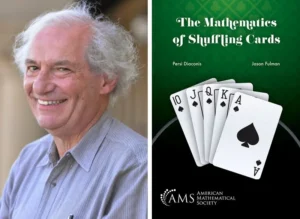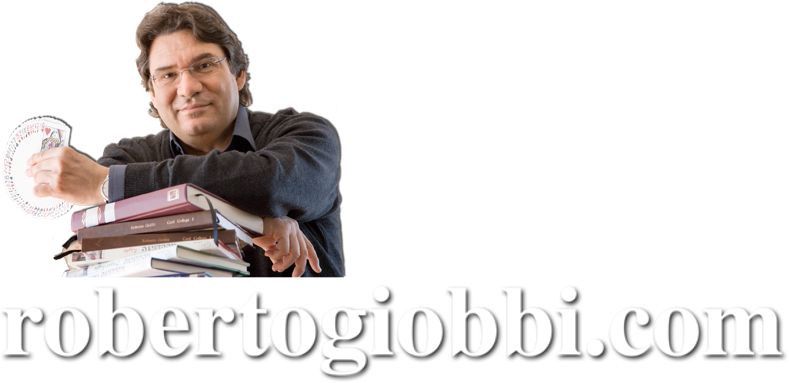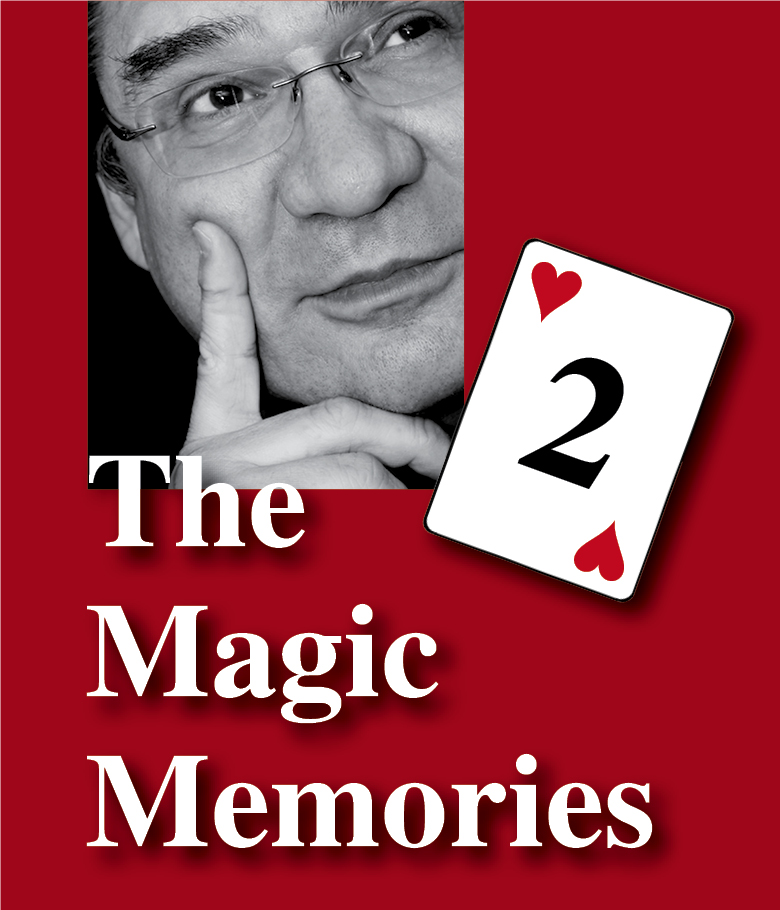
Hello everyone!
Today’s topics are: Thoughts on “And Yet It Is!”; The Mathematics of Shuffling Cards (Diaconis); The Missing Link (cardinimagican YouTube channel); Still One-Eyed…
These are The Magic Memories 160, gone online Sunday, January 21st, 2024, at 0:07h sharp.
All The Magic Memories from 2021, 2022, and 2023, including the Magic Advent Calendar from 2020, can be found HERE.
Thoughts on “And Yet It Is!”
“And Yet It Is!” is a card piece I describe in my book Stand-up Card Magic ( p. 119) and also perform on my first Penguin Live Video Lecture 1, the one devoted to stand-up magic with cards and reflecting pretty well the content of the homonymous book.
The trick is really a good one as it can be done in practically any situation, for a small audience and also for a large one, it has rhythm, enough situation comedy but not too much to ruin the effect, a double-reality climax, is easy to follow, and last but not least is an excellent exercise to practice basic techniques (a Force and a Top Change), assistant management and presentation. It is definitely not for the beginner but the ideal trick for the medium to advanced practitioner who likes performing. If you have never done the trick, you will be amply rewarded if you learn it and will then have a trick to keep in your active repertoire for a lifetime.
The trick itself, by the way, seems to be an old one whose originator is lost in the annals of magic, but which was popularized by Pat Page, who liked to perform and explain it in his lectures.
Although the trick can be done with any freely selected card (use a key card location if you do!), in my opinion best results are obtained if the card is forced.
In Stand-up Card Magic I suggest forcing the Jack of Hearts (JH), and then use the Ten of Hearts (10H) to top change. This makes the final transformation clear and visible even in a larger auditorium, and even those spectators who claim not to know cards can understand and appreciate the effect.
That claim, incidentally, that occasionally is brought forth by a spectator that he (or she) doesn’t know cards is just silly, because if they are literate – and most are (!) – they can read numbers and letters, and everyone in the civilized world recognizes a spade, a heart, a flower (club) and a diamond – so, is it that they don’t know? All these people want is attention, and I give it to them by replying, “Of course you do, you just didn’t know until now!” This inevitably causes a communicative laugh. But I am digressing…
Here is a small idea for the trick that occurred to me recently and that gives me that extra bit of confidence when classic forcing the JH.
Have the JH on top of the deck, immediately followed by the 10H.
Bring the two cards to the lower third, and hold break above them. Spread the cards between the hands trying to classic force the JH, BUT since you know that the 10H is following right after the JH, you have an extra leeway. When opening the spread a bit to make it easier for the spectator to take a card, spread both cards, so he can take one of two.
Although this is just one card more, if you have ever tried the Classic Force you know that this little thing is an enormous help. When the spectator looks at the card, casually cut the other card to the top and if you are like me, who does not like taking risks, glimpse it to make sure you know which of the two he took (I use the “Top-card Riffle Glimpse” from Card College 1, in my opinion the very best top-card glimpse for magic). Obviously the trick word regardless of which one of the two is initially selected.
The Mathematics of Shuffling Cards
Here is a book that was published recently and that might interest some of you.
The Mathematics of Shuffling Cards, by Persi Diaconis and Jason Fulman, explores the mathematics behind the question of how many times a deck of cards should be shuffled for effective mixing, using shuffling techniques such as riffle, overhand, and table smooshing.
It encompasses probability, combinatorics, and algebra, with applications to magic tricks and gambling, and also draws connections to advanced mathematical fields like Lie theory, algebraic topology, and stochastic calculus. Suitable for upper-division courses and researchers in mathematics, statistics, and computer science, the book offers insights into the application of probability theory in diverse realms, including card games.

Diaconis is the guy who ran off with Vernon at age fourteen, spent a few years with Vernon on the road (that would make quite a novel!), only to then go on to become one of the world’s most renowned statisticians. I met him on three occasions, and spent several days with him, and one day I might report about this, too 🙂
Talking to Denis Behr about the book and other publications by Diaconis, several of which relate to the world of magic, historically and technically, he sent me an interesting link: If you want to read and try to understand math of the highest degree as (sometimes) related to magic, you can find almost all of Diaconis’ scientific papers BY CLICKING HERE.
The Missing Link
Years ago I had founded a small “magic chat group” of a dozen people, not so much for “chatting” as I do not particularly like that, but with the idea that each member would contribute one item per month, usually without further discussions as this usually consumes more time than we have… The group’s name, by the way, was ViVaLuBa, and I challenge anyone to guess how it came about and what it means – don’t worry, it is not so important 🙂
The contribution could be an unpublished document or video, a short or long essay on any topic that somehow relates to magic, an opinion, a book review, an anecdote, etc. You get the idea.
If you consider that at the outset the group’s members were Max Maven, Pit Hartling, Howard Hamburg, Marco Pusterla, Reinhard Müller, Toni Cachadina, to name just a few, you can imagine that twelve times twelve high-caliber contributions made a more than just interesting addition to each member’s magic year.
Peu à peu the members thinned out, however, until only six were left, and then we stopped the project which had run a few years and provided all of us with a great time and exchange of excellent ideas.
In some future Magic Memories I might share a few items, although the consent was that all contributions were strictly confidential. Meanwhile, some of the members have sadly left us, such as Jesus Etcheverry and Max Maven, and so I will decide in their name what to release and what not.

One of the contributions came from my dear friend Stefano Rezzonico, who is one of those enlightened amateurs not many will know, and it came in form of link to a YouTube channel most of us were not aware of at the time.
The channel is named cardinimagican, and it contains mainly videos from the Spanish and South-American magic culture, so almost all is in Spanish language, but a lot being visual, you will be able to appreciate it anyway.
To get to the channel CLICK HERE.
Still One-Eyed…
That’s it for today, my friends, as I am still visually handicapped, waiting for the cataract operation on my second eye (not to be confused with my Second Sight…) on TUE, 23rd JAN 2024. Until then my eyes are out of sync, and I can only spend one or two hours in front of my beloved computer screen. I hope that with the second eye done view will return to normal, better than before… more in the next The Magic Memories 161.
BTW of “One Eyed”, if you have access to the books, check out “One-Eyed Jack Sandwich” in Lorayne’s My Favorite Card Tricks (p. 4), a good book… and Paul LePaul’s “The One-Eyed Jacks” in The Card Magic of LePaul ( p. 146), a sensational book…
Wish you all a successful and happy week,
Roberto Giobbi


Te deseamos una buena recuperación. Gracias por tan buen contenido cada semana.
Thoughts on “And Yet It Is!”
Roberto, the idea of forcing one of TWO cards is very good. The fact that either card could be selected is nice. Since the two cards are set ahead of time, I would consider to set up 3-4 pairs that could be forced and are easy to remember.
Now you can be even more free with the selection (force).
Just a thought.
Gary
A hilarious story Paul Gordon recently shared on the Magic Books Anonymous Facebook page:
Another funny magic memory: In the late 80s I was doing a very posh gig on the Bateaux Mouches in Paris. I was wearing my very expensive dress suit and working with another act. I asked him to help me with an impromptu “card to window” trick. I climbed the outer edge of the boat to slap a moist card on the outer window behind where a bunch of V.I.Ps were sitting. I slipped and fell into the Seine. Alarms rang, lifebelt was thrown and no one was happy…especially me. It cost me my suit and gig fee. Funny now but not funny then!